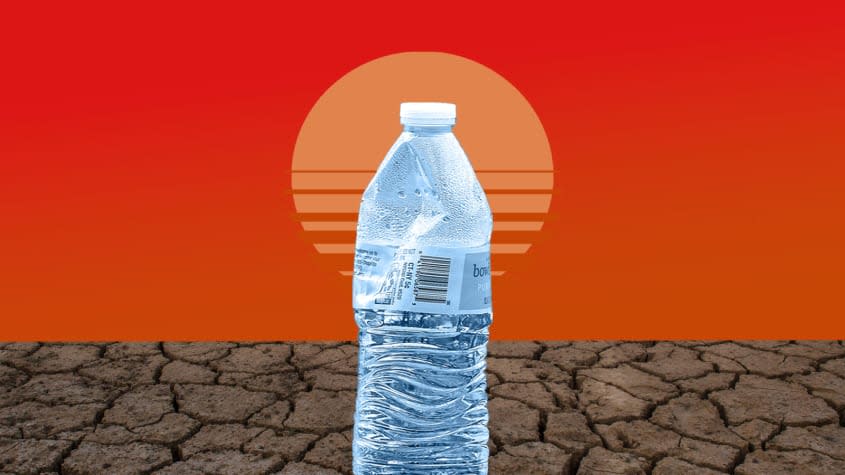Gonna be another hot one: How to survive a heat wave

With excessive heat warnings in effect across the United States this week, Americans are trying to find ways to cool off. One resource available is the Biden administration's new website, HEAT.gov, which aims to provide the public "clear, timely, and science-based information to understand and reduce the health risks of extreme heat." Here's everything you need to know:
What parts of the U.S. are experiencing heat waves?
The Pacific Northwest, Southern Plains, and Lower Mississippi Valley are all seeing higher-than-normal temperatures this week. On Tuesday, it reached 102 degrees Fahrenheit in Portland and 94 degrees in Seattle — both new daily records. The Pacific Northwest's heat wave is expected to last a week, and to have that many days in a row with temperatures "above 90 degrees is very, very rare" for the region, Vivek Shandas, professor of climate adaptation at Portland State University, told The Associated Press.
What's causing these heat waves?
There is a "heat dome" lingering in the Pacific Ocean west of British Columbia, which is trapping heat in the Pacific Northwest. A heat dome is a ridge of high pressure primarily caused by a "strong change in ocean temperatures from west to east in the tropical Pacific Ocean during the preceding winter," Reuters says.
Jennifer Francis, senior scientist at the Woodwell Climate Research Center, told Reuters that human-influenced climate change is altering wind patterns and weather systems "in ways that make these heat waves, like we're seeing right now, more intense, more persistent, and cover areas that just aren't used to having heat waves." Last week, President Biden reiterated that climate change is a "clear and present danger to the United States," and his administration launched a new website this week, HEAT.gov, to share information on planning and preparing for heat waves.
What else can I find on HEAT.gov?
HEAT.gov is the portal for the National Integrated Heat Health Information System, and states that it "seeks to improve federal, state, and local information and capacity to reduce the health, economic, and infrastructural impacts of extreme heat." There are dozens of informational articles on the site, including tips on how to stay safe before, during, and after a heat wave; links to webinars on heat and health issues; and tools that can help users track extreme heat events and identify communities most at risk for natural hazards.
How can people stay cool in the heat?
Drink plenty of water so you're hydrated — don't wait until you're thirsty — and if you have air conditioning in your home, turn it on and plan on staying inside as long as you can. To keep the heat out of your house, put dark sheets or blankets over the windows. If the A/C is on and you're still hot, put a cool cloth on your forehead or take a cold shower. If you don't have air conditioning, see if your city has a cooling center you can go to. In some areas, libraries and community centers are also staying open longer so people can cool off inside. It's best to avoid all strenuous outdoor activities during a heat wave, especially in the mid-afternoon when it's typically the hottest time of day; if you must go for a walk, take it early in the morning or in the late evening, and try to stick to a shaded area.
Make a note to also check in with your elderly relatives and friends to see how they are doing in the heat, and don't forget about your pets — make sure they always have access to fresh water, don't let them walk on hot pavement, and never leave them locked inside a vehicle.
What are some signs and symptoms of heat-related illness?
Signs of heat stroke — the most serious heat-related illness, which can lead to death — include a high body temperature of 103 degrees Fahrenheit or higher; hot, red, dry, or damp skin; nausea; confusion; headache; a fast, strong pulse; and dizziness. If you suspect someone has heat stroke, immediately call 911 and move the person to a cooler spot. You should place cool cloths on them in an attempt to lower their temperature, but do not give them anything to drink, the Centers for Disease Control and Prevention says.
The signs of heat exhaustion include cold, pale, and clammy skin; heavy sweating; a fast, weak pulse; muscle cramps; dizziness; headache; tiredness; and nausea or vomiting. In this case, move the person to a cool area, have them sip water, loosen their clothing, and either place cool cloths on their body or have them take a cool bath. If the person starts to throw up or their symptoms get worse or last longer than one hour, seek medical treatment.
You may also like
Ex-Republicans and Democrats form Forward, a new centrist political party

